#folklore queer
Text









happy 21st birthday to me! as it is accustomary, i would be very glad if you shared my art :)
238 notes
·
View notes
Photo

wesołego geja
(dont tag as wlw/nblw! they are queerplatonic)
#have to specify that in the post because it happens to every single drawing of them ever#artwork#original characters#artist on tumblr#illustration#slavic#ukrainian folklore#polish folklore#queer#duch na strychu#lgbt#pride month
2K notes
·
View notes
Text
Cú Chulainn
from the Ulster Cycle of Celtic Mythology



submitted by anon
#the first illustration is by j. c. leyendecker so like.. immediately queer lol#I don't know much about celtic mythology (I'm australian) so I find this really interesting#idk if this story is more commonly known in the uk#cu chulainn#cuchulainn#celtic mythology#irish mythology#mythology#celtic folklore#ulster cycle#polls#queer#new post
138 notes
·
View notes
Text

It's been a year and we're still here
#art#artists on tumblr#digital art#my art#drawing#artwork#original art#sketch#digital illustration#sketches#lgbt#queer#lesbian#bisexual#slovak folklore
423 notes
·
View notes
Text
Vote On...
#podcast polls#the two princes#the midnight library#freaky folklore#queer movie podcast#old gods of appalachia#hello from the hallowoods#the magnus archives#tma#the sandman#the sandman dreamcast#the black tapes#re dracula#dracula#ghoul intentions#welcome to nightvale#wtnv
595 notes
·
View notes
Text
#werewolf#folklore#writing#metaphor#poll#polls#werewolves#the beast within#van helsing#gabriel van helsing#mental illness#queer identity#monster loving#not to be a monsterfucker on main but#monster fucker#monsterfucker#righteous anger#the other#outsider#lgbtqia#idk what else to tag lol
1K notes
·
View notes
Text
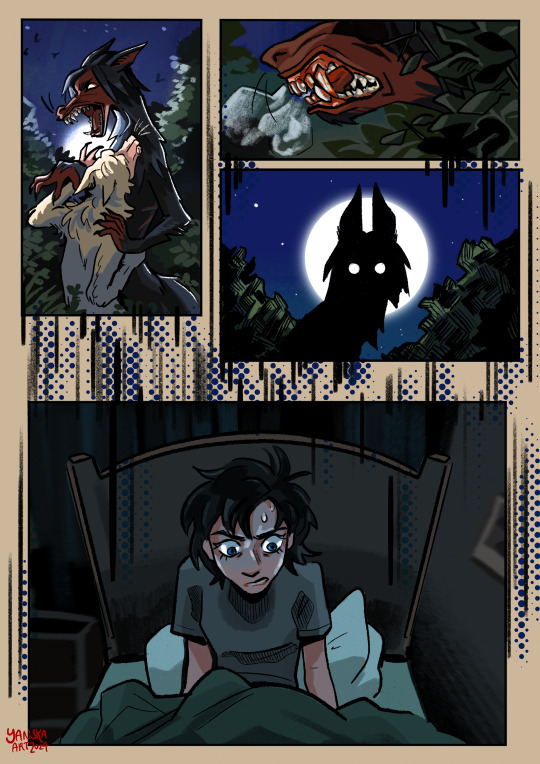
Bad dreams
#wolf girl wicked teaser!#not the final style of the comic but a little experiment#thank u all for the patience.. im gettin there#yanska art#art#wolf girl wicked#werewolves#werewolf#original character#oc#monsters#digital art#procreate#queer character#female werewolf#werewolf art#beasts#folklore#horror#horror comic#comic#webcomic
101 notes
·
View notes
Text
Do you love fairy tales? I want to hear from you!
EDIT: I will be closing the survey on November 9th! Thank you everyone who has participated!!!
My name is Ainjel Stephens and I am a PhD candidate in the Folklore department at Memorial University of Newfoundland. I am currently conducting a research project on fairy tales reception by queer-identifying individuals for my PhD dissertation under the supervision of Sarah Gordon. The purpose of this study is to learn how people who feel queer or identify as queer think about and respond to fairy tales.

Artist: Gustave Dore
If this sounds like a project you would be interested in participating in, then I invite you to take a short survey where you will be asked a few questions about who you are, as well as reflective questions about your thoughts and feelings on fairy tales, and if these tales are “queer.” It should only take about 10 minutes of your time to complete.
The survey asks if you would like to participate further with an interview with myself in order to discuss your thoughts and opinions on fairy tales. This interview will be a recorded hour-long interview through video conferencing platform Tauria or Webex. If you select yes, I will be in contact with you with further steps. If you select no, then that’s it! Thank you for participating.
To participate, you must be the age of majority and no younger than 19, have fairy tale knowledge in English, and identify with the term “queer.”
If you are interested, click the link below to participate in the anonymous survey.
If you have questions or want to chat further, you can contact me at [email protected] or through my inbox on my project blog, www.diamondsandtoads.tumblr.com/
If you know anyone who may be interested in participating in this study, please send this post along.
Thank you for reading!
The proposal for this research has been reviewed by the Interdisciplinary Committee on Ethics in Human Research and found to be in compliance with Memorial University’s ethics policy. If you have ethical concerns about the research, such as your rights as a participant, you may contact the Chairperson of the ICEHR at [email protected] or by telephone at 709-864-2861
#fairytales#fairy tale retelling#queer#lgbt#lgbtq community#beauty and the beast#cinderella#little red riding hood#charles perrault#grimms#grimm fairy tales#queer fairy tale#diamonds and toads#folklore#folktale#snow white#sleeping beauty#queer writers#queer community#lgbt community#the princesses#academia#queer fairytales
258 notes
·
View notes
Text
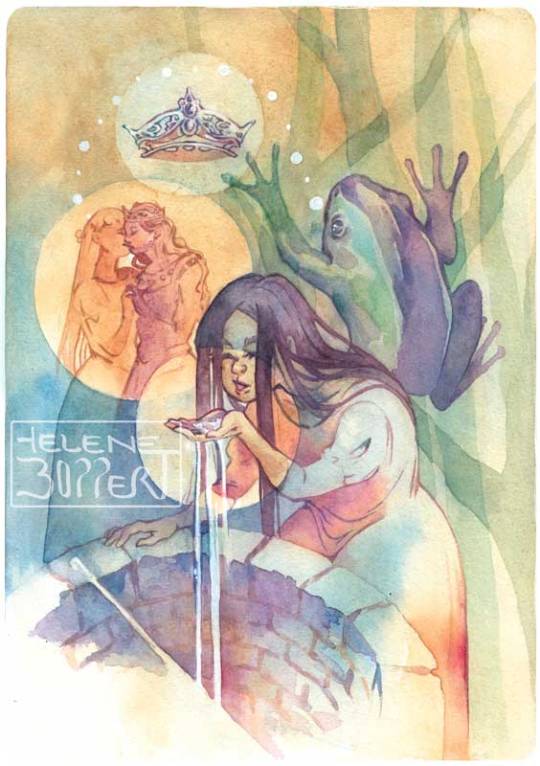
Illustration for Wain, written by Rachel Plummer and published by TheEmmaPress
Scottish folklore poems with an all lgbtq cast 🏳️🌈
If you want to find out which scottish folklore character this is... go on to read the book!
#artists on tumblr#my art#watercolor#illustration#lgbtq#diversity#gay#queer#lesbians#fairytale#folklore#mythology#working artist#stories#story illustration
338 notes
·
View notes
Text
Pagan Wedding Flowers (and other plants) Cheat Sheet
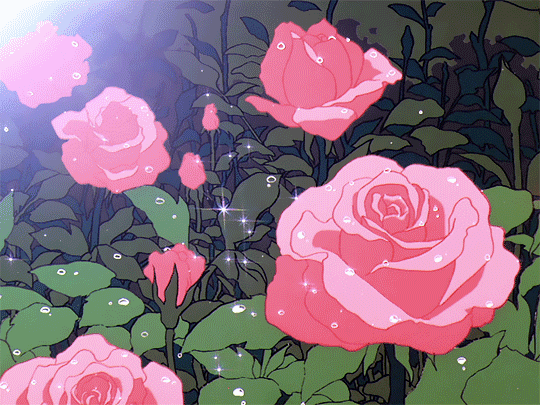
Flowers have been associated with weddings for almost as long as humans have been getting married. In fact, the use of flowers in ritual may actually be older than humans! Neanderthal graves in Iraq suggest that Neanderthals buried their dead with flowers. There are mentions of flowers in our earliest recorded accounts of weddings, such as in Egypt, Greece, and Rome.
Historically, couples would have used whatever flowers were available to them. While some cultures had flowers they preferred for weddings because of their symbolism, couples would have been limited by what grew in their area and by what was in bloom at the time of their ceremony. To be truly as historically accurate as possible, consider using flowers you grew or foraged yourself. Bonus points for native blooms!
For those who aren't into growing or gathering your own wedding flowers, modern florists and greenhouses allow us to choose from a wide range of flowers, many of which aren't native to our homes. This makes it much easier to choose flowers based on their symbolism, history, or cultural meaning.
Historic Wedding Flowers + Plants
Roses have been the flower of choice for Western weddings pretty much forever, and with good reason. The rose is associated with several ancient goddesses of sex, fertility, and/or romance, such as Inanna, Ishtar, Aphrodite, and Venus. (Later, medieval Christians would also associate this flower with the Virgin Mary.) Including the goddess's flowers in a wedding may have been a way of invoking her blessing on the union. Sappho called rose "Queen of the Flowers."
Roses are held in a high regard in pretty much every culture with access to them. They're strongly associated not only with love, but also with beauty, wholeness, blessings, and even spirituality.
Rose was included in wedding celebrations in Ancient Hellos (Greece) and Rome. It is associated with the planet Venus and the water element.
Wheat was also a popular inclusion in weddings in ancient Greece and Rome. Hellenic brides would carry sheaths of wheat or another grain to invoke fertility and good fortune. Wheat was strongly associated with agrarian goddesses like Demeter, Persephone, Ceres, and Proserpina. Carrying wheat may also have been a way of expressing a wish for the marriage to produce many children. Pliny the Elder explicitly says in his Natural History that wheat was included in weddings to honor Ceres.
In modern occult systems, wheat is associated with fertility, the conception of children, and wealth. It is associated with the planet Venus and the element of earth.
Olive branches also featured in Hellenic weddings. Olive was an important crop in the ancient Mediterranean, and olive branches were a symbol of peace and friendship. Olive was also used in the victors' crowns in the Olympic Games. In Athens, the olive tree was a symbol of Athena. It was also carried by worshipers of Apollo when they visited the Oracle at Delphi. Olive was also important to the Romans, who associated it with Mars in his aspect as a protector of peace.
In modern magic traditions, olive is associated with beauty, healing, stamina, wealth, fertility, protection and of course, peace. It is associated with the sun and the fire element.
Orange blossoms were included in Hellenic weddings as a sign of happiness. These strongly scented white flowers also sometimes appeared in Roman weddings. Thousands of years later, Queen Victoria wore a crown of orange blossoms at her wedding, but for her they were a symbol of chastity.
In modern systems, orange is associated with joy, partnership, sweetness, and good luck. It is associated with the sun and the fire element.
Hawthorn appeared in weddings in ancient Rome. Pliny the Elder said that Roman bridal processions included a hawthorn torch dedicated to the goddess Ceres. In Rome, hawthorn was more generally associated with love and good luck.
In Celtic cultures, especially Ireland, hawthorn was believed to be a fairy tree. For this reason, cutting a hawthorn tree or bringing hawthorn branches inside was considered bad luck.
The blooming of hawthorn trees was used to determine the date of Bealtaine, and hawthorn boughs were often decorated with flowers, ribbons, and egg shells to make a May bush, which was placed by the front door for good luck. In Britain, hawthorn wood was used to carve maypoles. Hawthorn flowers may be especially appropriate for a May wedding or handfasting.
In modern occultism, hawthorn is associated with protection, healing (especially healing the heart), romantic love, fertility, granting wishes, and happiness. It is still strongly associated with weddings and marriage. It is associated with the planet Mars and the fire element.
Lotus may have featured in ancient Kemetic (Egyptian) weddings. The lotus was an important symbol in Kemetic religion, and was associated with the sun, rebirth, and the creation of the world. Lotus flowers featured in festivals to honor Hapi, the androgynous god of the Nile. The lotus is used in art to represent Upper Egypt. An Egyptian poem from 1100 BCE connects the lotus to marriage.
Lotus flowers were also popular in ancient Chinese weddings, and they're still used by some Chinese couples today. In Chinese culture, lotus represents purity, honor, and long life.
In modern traditions, lotus is associated with protection, spirituality, and blessings. It is associated with the moon and the water element.
Yellow flowers were used in pre-Christian Ireland for blessings and protection. The exact flower used for these rituals is not specified, so it seems like the color was what mattered. Modern pagans looking to carry on this tradition have lots of yellow flowers to choose from. Some popular choices include yellow roses (see above), yellow amaryllis (associated with creativity, playfulness, and joy), chrysanthemum (associated with long life, optimism, and protection), marigold (associated with happiness, rebirth, and vitality), and/or daffodils (associated with love, fertility, and luck).
Modern Wedding Flowers
We've gone over some of the flowers that were popular in historic pagan weddings, but it's also easy to pagan-ify the flowers that are most popular in modern weddings. Here's a quick rundown of some popular wedding blooms and their neopagan and occult symbolism:
Peony is associated with purification, healing, prosperity, and success. In ancient Rome, peony was believed to be sacred to Mars. It is associated with the sun and the fire element.
Dahlia is associated with mystery, occult wisdom, and transformation. It is associated with the moon and the water element.
Lilac is associated with balance, peace, romance, protection from evil, and attracting friendly spirits. It is associated with Venus and the water element.
Sweet Pea is associated with comfort, charm, and sweetness. It is associated with Venus and the water element.
Hydrangea is associated with healthy boundaries, breaking negative patterns, hex breaking, and protection. It is associated with water and with both the moon and Neptune.
Tulip is associated with beauty, desire, gratitude, love, prosperity, and simplicity. It is associated with Venus and the earth element.
Orchid is associated with beauty, elegance, sexuality, fertility, and romance. It is associated with Venus and the water element.
Lily is associated with spirituality, beauty, harmony, and protection from the evil eye. It is associated with Venus and the water element.
Carnation is associated with beauty, love, rebirth, strength, and healing. Carnations are associated with same-gender love and especially love between men because of Oscar Wilde's fondness for them. They are associated with the sun and the fire element.
Gardenia is associated with love, peace, healing, and spirituality. It is associated with the moon and the water element.
Resources:
"New Neanderthal remains associated with the ‘flower burial’ at Shanidar Cave," Cambridge University Press
"History of Wedding Flowers" by Benna Crawford
The Roman Wedding by Karen K. Hersch
"The Olive in the Ancient Mediterranean" by Mark Cartwright
"The History, Mythology, and Offerings of Hawthorn" by Meghan Pivarnik
Where the Hawthorn Grows by Morgan Daimler
Temple of the Cosmos by Jeremy Naydler
The Magic of Flowers by Tess Whitehurst
The Magic of Trees by Tess Whitehurst (see my disclaimer about Whitehurst's books, but these are some of her better ones)
Cunningham's Encyclopedia of Magical Herbs by Scott Cunningham
#the great handfasting project#handfasting#pagan wedding#wedding magic#queer wedding#pagan#paganism#pagan witch#hellenic polytheism#hellenism#religio romana#cultus deorum#roman polytheism#kemetic paganism#kemetic polytheism#irish paganism#irish pagan#irish folklore#wicca#wiccan#flowers#flower magic#correspondences#love magic#love spell#green witchcraft#green witch#witch#witchblr#witchcraft
526 notes
·
View notes
Text

Today is TOS Amok Time's 57th anniversary, officially Spirk Day so I'm honoring the date by reading a paper on how the ideas behind Kirk/Spock slash fanfiction articulate queer love in a way that makes it accessible to everyone, queer or not, and it is the most romantic paper I've read! Happy Spirk Day!
An excerpt of the text:
This paper argues that what the characters of Kirk and Spock represent is an archetypal pairing that transcends gender altogether. By reading K/S queerly and broadly, these gender distinctions become irrelevant.
What matters are the characters themselves, and the unique qualities that make fan authors - straight, gay, indifferent - feel the need to pair them. Specifically, the Kirk/Spock pairing represents not a bonded pair, but a divided self. Sexuality, like the mindmeld, becomes a stand-in for the reunification spoken of in Aristophanes' tale of the Children of the Sun - two humans once whole separated and ever seeking their other half. The corporate caretakers of these characters have proven themselves, to a broad readership, unwilling to realize the "particular style of the 23rd century" as one in which queer love is acceptable love.
And so, for close to forty years, an active and activist readership has been doing it for them through the creation of an aberrant folklore that they believe adheres more closely to the spirit of the narrative's utopian origins. It has fallen upon the fan to become creator, the reader to become the author, and the author to become active in the reuniting of this divided self.
From The Final Frontier Is Queer: Aberrancy, Archetype and Audience Generated Folklore in K/S Slashfiction (2005) by P. J. Falzone on @jstor
#james kirk#spock#spirk day#spirk#captain kirk#star trek tos#star trek#fandom history#queer#jstor#fan fiction#slash fanfiction#fandom#humanities#folklore#anthropology#amok time#queer culture#queer history
26 notes
·
View notes
Text
I'm going insane while making this

Я збожеволію доки пофарбую це
#artists on tumblr#illustration#traditional art#queer#sapphic art#sapphic#artistic nudity#wlw#украрт#укртумбочка#mavka#huldra#mythology#folklore#ukrainian folklore#мавка#just two forest spirits are kissing each other please go away#wip#only if you're not forest rusalka or vodyana#ravencat35
39 notes
·
View notes
Text
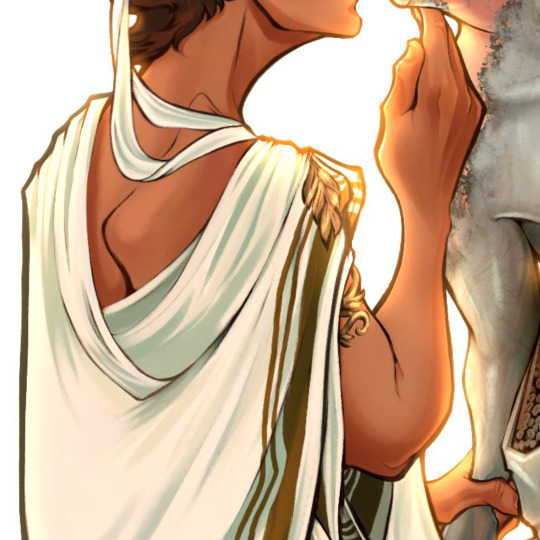
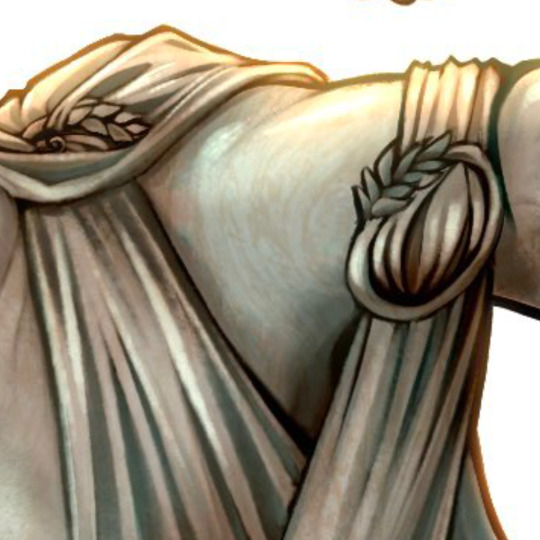
Auro, the God of Spring, turns to stone each year at his season’s end, only awakening the following year at its beginning.
For four hundred years, it has been a dreamless sleep for Auro.
This year, he knows he will dream of Alexios until he can walk the earth again.
🖼️ by @crossroadart-seabear
#writing#fiction#queer fiction#gay romance#original fiction#emmaline strange#indie authors#lgbtqia#queer art#support human artists#sword and sandal#greek mythology#ancient greece#ancient rome vibes#fantasy#legends#folklore
153 notes
·
View notes
Text
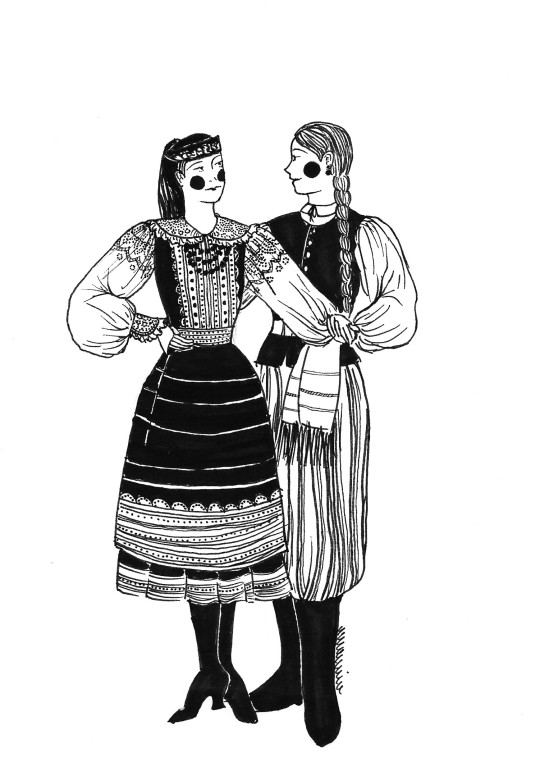
The Kurpianki from Kurpie Zielone have their Kurpie Białe counterparts
(in honour of the town I work in)
#my art#historical wlw#lgbt art#queer#sapphic#polish folklore#wlw post#polish folk#folk dress#folk costume#folk#slavic folk#slavic#slavic culture#poland#polska#kurpie#kurpie białe#kurpie białe folk costume#kurpie białe folk dress#queer artist#wlw love#sapphic art#lgbtq
73 notes
·
View notes
Text
I found a new fairy tale to add to my little hoard of queer folktales!
The Princess of China
Albanian folktale, published in 1879 by Auguste Dozon, translated by Robert Elsie.
[Cw: Cross dressing used as deception, but never maliciously.]
This tale follows a Prince and his friend the son of the Grand Vizier. The latter dresses and presents as a woman on two separate occasions. Once to meet the princess of China and tell her his friend is in love with her, once to pretend to be the princess, so he can go get married in her place while she runs off with the prince. Then this happens:
When the son of the Grand Vizier arrived, he was led to the house of the groom with all the pomp and ceremony of a royal wedding. It was the custom there for the sisters of the groom to spend the first three nights with the bride, but the three sisters could not agree which one of them was to go first. The queen, the groom's mother, decided that the youngest daughter, whom she loved the most, should spend the first night with the bride. After the first night, the youngest daughter fell in love with the bride and begged her mother to let her spend the second night there too. The second night, she realized that the bride was actually a young man and said to him, "Tell me the truth, are you a man or a woman?"
"I am a man," he replied, " and then told her the story of what had happened.
She saw that he was very handsome and said, "I'd like to marry you but I don't know whether you want me."
"Oh yes, I do."
They escape the court together, catch up with the prince and the princess of China, and both couples get married.
#absolutely chuffed with this one#delighted with the way the vizier's son has absolutely zero nerves being carried off as a bride#elated that the youngest sister falls in love with the vizier's son before realising he is a man#folklore#albanian folklore#fairy tale#folktale#queer#queer representation#queer folklore#queer folktales#gender nonconforming
35 notes
·
View notes
Text
I went down another research hole the other night. Y'all might know about "Big Rock Candy Mountain" from O Brother, Where Art Thou...
youtube
But it, like most of the songs from that movie comes from a tradition of American folk songs. Big Rock Candy Mountains very specifically this tradition of hobo ballads. And, like setting aside the overtones of American colonialism that purvey all these sort of "there is a dreamland to the west for you to claim" songs, there is a cultural tradition of these. "Life is a struggle but there is a place where it's not if you can find it" is a very human sentiment.
There are plenty of medieval works on Cockaigne, which has a similar kinda tone to it. A land where the harsh realities of a blue collar or peasant class struggle can not exist.
But did you know about the secret gay lyrics of Big Rock Candy Mountain?
After Harry McClintoc recorded his version of this ballad, which he claimed he wrote in 1895 based off the stories he heard as a kid working on the railroad, a bunch of people took him to court because they claimed he stole and took parts of his song from a bunch of other hobo songs in the same traditions. Sweet Potato Mountain, Hobo's Heaven, An Appleknocker's Lament...
As part of the court dispute, McClintock was told by the judge to perform the song. As art of the court record we have a last stanza which is not used in the cleaned up version used for records and "reputable venues". This was recorded as:
"The punk rolled up his big blue eyes
And said to the jocker, "Sandy,
I've hiked and hiked and wandered too,
But I ain't seen any candy.
I've hiked and hiked till my feet are sore
And I'll be damned if I hike any more
To be * * * * * * * *
In the Big Rock Candy Mountains."
Now NO ONE KNOWS what that last lyric is. However we can make some very educated inferences. This is about gay sex.
And it's not like "Big Rock Candy Mountains" is immune to commentary despite the more sanitized versions you'd see later from the likes of Burl Ives.
I'm thinking very specifically:
"In The Big Rock Candy Mountains
All the cops have wooden legs
And the bulldogs all have rubber teeth"
and
"In The Big Rock Candy Mountains
The jails are made of tin
And you can walk right out again
As soon as you are in
There ain't no short-handle shovels
No axes, saws or picks
I'm a-goin' to stay where you sleep all day
Where they hung the jerk that invented work
In The Big Rock Candy Mountains"
Going back to the lyrics
"The punk rolled up his big blue eyes"
Punk in this context and original use, especially in it's use in hobo culture refers to a younger man or boy being kept for sex and other menial task.
Which, you know, should put a whole new context to see how it's been used against other forms of youth culture. Hippies, greasers, punks,ect. And at least for me makes it's misuse feel even more slapdash and pathetic.
If you doubt this, it is quickly followed up by the term "Jocker"
"And said to the jocker, 'Sandy,"
a slang term of the era referring to an aggressive and usually straight passing dom top, especially in the context of prison.
To be a little flippant, this is a twink grumbling to a daddy.
As I mentioned before, no one actually knows what that missing lyric is. Or at the very least it's never been made public.
But give it's proximity to "sore" and "more" a lot of guess tend to jump to the word "Whore".
Sam Eskin actually interviewed McClintock for Folkway Records and which, when asked about the lyrics said “the ambition of every hobo was to snare some kid to do his begging for him, among other things,”
This is something you see in a lot of early gay panic lit all the way up through the 80's. Especially as the moral authoritarianism of the Hayes code kicked in. But it also found itself in the early pulp lit where queerness could still exist (if behind a little mask and a performative, if dramatic, finger shake)
Queerness and homelessness were intertwined. Still are, both from my own personal experiences and if you look at the statistics. And it's not much of a leap to understand why.
---
But we do have some offered lyrics from other authors:
"To be buggered sore like a hobo’s whore,” Is a popular one, which has it's origins from a 2002 folk music site called mudcat and waaaaay too British to read naturally if you ask me.
“And be cornholed till my ass is raw.” is another one you see passed around a lot. Which feels too forum humor.
George Milburn in 1930 offers "To be a homeguard with a lemonade card.” which is naive and sweet to say the least.
The fact is we still don't know this lyric, gay punchline (or at least gay panic) as it might be. All we know is that Big Rock Candy Mountain "Was never meant to be a parlor song" in McClintock's own words.
Well that and the insight it offers into social perceptions of queerness at the time and how it's shaped and shifted in the future.
What do you think this secret gay Big Rock Candy Mountain lyric is?
163 notes
·
View notes